There are enough suspects in the death of Meriwether Lewis-including the famous explorer himself-to fill an Agatha Christie mystery. How could the man who, with William Clark, was exalted for opening transcontinental passage to the Pacific Ocean wind up a few years later broke and dead on a well-traveled Eastern road? No one really knows, but theories abound. Upon Lewis’ triumphal return from his two-year expedition, President Thomas Jefferson, his friend and childhood neighbor, appointed him in 1807 governor of the upper Louisiana Territory. But Lewis was a better explorer than administrator. In office in St. Louis, he was plagued by unruly settlers, corrupt officials, and arduous negotiations with various Indian tribes. More and more distraught over his troubles by 1809, Lewis abruptly decided to go to Washington to try to straighten out some matters, including a dispute over unpaid expense reports that had left him in debt. In early September, Lewis left St. Louis on a boat for New Orleans, from where he would take ocean passage for Washington. During the river voyage, he made out his will, leaving whatever estate he had to his mother. He apparently suffered a breakdown, and a few days later, when the boat reached Chickasaw Bluffs, (now Memphis), Lewis was put ashore with a high fever and in a state of mental derangement. He had twice attempted to kill himself. The governor recuperated for a couple of weeks at Fort Pickering, then on September 29, after borrowing $100 to see him through his trip, left with two servants and an Army officer along the overland route called the Natchez Trace. What happened after that has been questioned by historians, but here is one version. On October 10, Lewis stopped for the night 72 miles southwest of Nashville in one of two log cabins owned by Mrs. Robert Grinder, whose husband was away. Mrs. Grinder said later that Lewis was clearly agitated. Well into the night he paced back and forth and mumbled, his muttering punctuated by occasional outbursts, about the unfairness of his problems in Washington. During the night, Mrs. Grinder said, she heard a gunshot followed by a thud in Lewis’ adjacent cabin. Then she heard him yell “Oh, Lord!,” then another shot. Lewis staggered to her cabin and pleaded through the door, “Oh, madam! Give me some water, and heal my wounds!” But Mrs. Grinder said she was too frightened to open the door. Only the next morning did she send one of her children out to the distant barn to alert Lewis’ servants, who apparently hadn’t heard the commotion. They found Lewis lying on his bed, shot once in his side and once in his head, alive but with part of his forehead shattered and his brain exposed. Lewis begged them to kill him. His last words were “I am no coward, but I am so strong. It is so hard to die.” Lewis was buried in a makeshift plank box near the cabin, alongside the Natchez Trace. All indications from that story are that Lewis committed suicide. That’s the version that made it to Washington and received the most attention. But local Tennesseeans believed otherwise. Speculation of foul play passed down through the generations, so that even on March 6, 1930, there was a headline in the Lewis County Herald that read: “Was Lewis Murdered?” Was he? There was never an investigation to find out. But historians have pointed to several plausible suspects. The Army officer who had been traveling with Lewis had been separated from the group for a couple of days. When he arrived later on the day Lewis died, he didn’t even examine Lewis’ wounds for gunpowder burns to determine whether he had been shot at extremely close range. Given the political backstabbing rampant in the Louisiana Territory, the officer himself could have killed Lewis. So could Lewis’ servants, who later complained that Lewis had never paid them enough. Lewis was found with only 25 cents on his body, although he had left Fort Pickering with more than $100. Also suspect is Mrs. Grinder, who may have been so spooked by Lewis that she decided to kill him. Some say Mr. Grinder returned during the night and killed Lewis while robbing him. In fact, there were highway robbers all over the Natchez Trace who could be held in suspicion. The verdict is forever suspended. Even the location of Lewis’ grave is unclear. It was poorly marked until a national monument was established on the site in 1925, well over a century after the mystery was played out.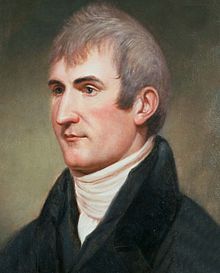
Journal Notes
The Jersey Lily
The Royal Aquarium in Westminster, England, was a hub of activity on April 6, 1876. Many members of London’s wealthy aristocratic society were on hand for the gala opening of the magnificent structure built entirely underwater.
Dignitaries, barristers, popular sculptors, artists, and photographers were there to witness the occasion and to be inspired by the colorful coral reefs, graceful marine life, and crystal-blue waters. Their attention, however, was drawn away from the oceanic scenery when a tall, curvaceous young woman with Titian red hair entered the room. She was adorned in a simple black gown. Her azure eyes scanned the faces staring back at her, and she smiled ever so slightly. Within moments of her arrival, visitors descended upon the woman to admire her beauty.
Eminent portrait painters and photographers approached the unassuming woman and asked her to sit for them. Poets sought introductions and then recited blank verse about her arresting features. By the end of the evening, Lillie Langtry was the toast of Great Britain-a Professional Beauty to be reckoned with.
Emile “Lillie” Charlotte LeBrenton was born to William Corbet and Emilie Martin LeBreton in October of 1853 on the Isle of Jersey, a few miles off the coast of Saint-Malo, France. She was the only daughter in a family of six children.
Beauty alone was responsible for Lillie Langtry’s initial renown. Her photographs were printed in England and American newspapers, and by the time she was twenty-seven years old she was as famous in those countries as she was in her own.
The writer Oscar Wilde, whom Lillie had met at society parties, convinced her that the theatre was her calling and helped her get her start in the business. Lillie took the stage for the first time on December 15, 1881 in the play She Stoops to Conquer at the Theatre Royal. She was an instant hit.
Theatre managers throughout Europe clamored for a chance to star the famous beauty in one of their shows. After touring London and Scotland, performing for full houses nightly, she traveled to America. She appeared in a variety of productions in theatres from New York to San Francisco.
The Jersey Lily (a nickname she acquired because of where she was born) was romantically linked to the Prince of Wales, gambler Diamond Jim Brady, and actor Maurice Barrymore. Everywhere she went men found her shockingly attractive. Among her famous admirers was Judge Roy Bean of Texas. Bean fell in love with Lillie after seeing her photograph posted on a playbill. Soon the walls of Judge Bean’s saloon courthouse in Vinegaroon, Texas were covered with her pictures and press clippings. He renamed that town Langtry and Lillie visited the town named in her honor in 1904. Judge Bean had died not long before. She toured his Jersey Lily Saloon and drank a toast in his honor. Langtry residents gave her Bean’s pet bear, which had been chained for years to the foot of his bed, and the animal ran off as soon as it was released. Lillie was then presented with the Judge’s revolver, the same one he’d used to keep order in his court.
Everywhere Lillie performed across the West she packed venues and received excellent reviews. At times her theatrical performances were upstaged by her beautiful costumes and dazzling jewelry. Thousands of women bought seats in the hope that they would attend a performance in which Lillie wore her fabulous gems.
World-famous Lillie Langtry retired from the theatre in 1919 and made her home in Monaco. She died on February 12, 1929 from influenza. She was seventy-six years old. News of her death spread quickly through the United States. The front pages of newspapers across America recalled her contributions to the theatre, and some editorials declared her passing as “an era that has come to an end.”
Howdy Doody
Howdy Doody was the first children’s program presented live for one hour every Saturday morning, featuring a freckle-faced boy marionette. When kids across the country began yelling “It’s Howdy Doody Time!” it marked the beginning of the first generation of kids to be reared on TV. The program ran until 1960 and spawned a few other children’s programs from characters in the ensemble. “Buffalo” Bob Smith, who was the host and the voice of Howdy, died in 1998 at the age of eighty of pneumonia. The original Clarabell the clown was played by Bob Keeshan who later became Captain Kangaroo and the host of his own show in 1954: Keeshan died at seventy-six in 2004 of respiratory failure. Lew Anderson who took over the job as Clarabell, died in 2006 at age eighty-four of prostate cancer. Kids thought Howdy Doody was real, and in 1952 he received over a million write-in votes to become president. When the show ended, Howdy spent many years locked inside a dark trunk in a cold and lonely vault. In 2000, after an lengthy court battle deciding ownership, Howdy was finally freed, though currently hangs lifeless, on display at the McPharlin Puppetry Collection in the Detroit Institute of Arts. 
The Boys of Bonanza
Bonanza made its TV debut in 1959 and was a smash hit for fourteen years, ranking only second as the most popular western of all time after Gunsmoke. The story centered on a father raising three sons on the Ponderosa ranch, a huge spread on the shores of Lake Tahoe in Nevada. Ben Cartwright, the father, was Lorne Greene: He died from an ulcer at age seventy-two in 1987. Two of the three sons died young: The middle son, Hoss, played by Dan Blocker, a 6-foot-3, 300 pound, good natured guy on and off screen died in 1972 at age forty-three of a pulmonary embolism after routine gall bladder surgery. The youngest son, Little Joe, played by Michael Landon, later went on to star in Little House on the Prairie and Highway to Heaven. Landon died at age fifty-four in 1991 of pancreatic cancer. Married three times, with nine children, he is remembered most for how he publicly faced news of his fatal illness with an unusual frankness. Blocker’s type of embolism and Landon’s cancer are often caused by exposure to chemicals, frequently from too much contact with butoxyethanol, a chemical in many household cleaning products. It seems likely that both actors breathed air or had skin contact with the chemical while on the set of Bonanza. The family cook, Chinese immigrant Hop Sing, played by Victor Sen Yung also died from exposure to chemicals, this time from his real-life kitchen: He died in 1980 at age sixty-five due to carbon-monoxide poisoning, stemming from a gas leak in a household appliance. 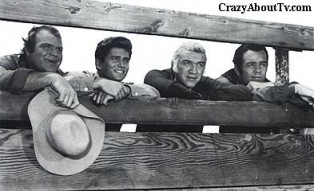
Rode Into the Sunset
The three top television westerns were Gunsmoke, Wagon Train, and Have Gun Will Travel. Gunsmoke featured Marshal Matt Dillon, modeled on Wyatt Earp. Howard McNear played morbid Doc Charles Adams: He died of a stroke in 1969 at age sixty-three. Georgia Ellis was the prostitute Kitty Russell on Gunsmoke: She died in 1988 at age seventy-one of AIDS, acquired after she married a bisexual younger husband. Wagon Train was a weekly drama portraying a clean-cut version of post-Civil War America’s journey westward, featuring Ward Bond as Major Seth Adams. He died in 1960 at age fifty-seven of a heart attack. Have Gun Will Travel was about a professional gunfighter named Paladin, played by Richard Boone and Kim “Hey Boy” Chan by Kam Tong: Boone holstered his six-shooter for a good as a result of cancer in 1981 at age sixty-three. Tong bowed out a sixty-two, going in 1969 of heart failure. 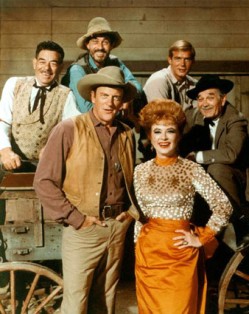
Closing the Open Range
Barbed wire doesn’t seem like such an important invention today, but it once played an integral part in the development of the American West. Joseph Glidden’s 1873 invention closed down the open ranges and placed cattle on well-defined lots of private plains and wide-open country was cordoned off with spikey wire, which effectively ended the era of the cowboy. Glidden, through barbed wire, became one of the richest men of his time. However, he died from an infection from an unhealed cut, much the way his invention had injured many handling it and the animals caught in its web. Upon his death, his body was shipped in a special ice-cooled train coach. His final wish was that he be buried far from the dusty plains where his Texas headquarters were located to lie eternally like a gentleman in a gravesite in New York. 
The Indian Princess
Pocahontas, a nickname meaning “little spoiled one,” was born Amonute, daughter of Chief Powhatan in 1595. She was an extrovert from a young age, inquisitive and naturally good-natured. At eleven years old she played a minor role in securing John Smith’s survival. Later she was the go-between for trade among the settlers and Indians bartering at Jamestown. The fictionalized version of her love affair with Smith may, in fact, bear some truth, but in a much more disturbing way for our modern sensibility. Today, a thirty-year-old having sex with a preteen is pedophilia and a crime. But, in that era, intercourse with non-Christian pagans of any age was not considered wrong. Pocahontas was known to have “long, private conversations” with Smith during her frequent visits to the Jamestown complex, yet the true dimensions of these encounters are a matter of conjecture. A few years later she was betrothed to the older Englishman John Rolfe, only after she agreed to be baptized in 1614. Rolfe took her to London, where she was received as a celebrity, billed as a real Indian princess by high society, and held an audience with King James. In 1617 she believed the smoky air of London was the cause of her coughs and bouts of weakness and wished to return to the forests she had known. Along with Rolfe she boarded a ship to return to Virginia, but the vessel only made it to the end of the Thames River before it turned back. Pocahontas died in London at age twenty-two of a disease called the king’s evil, a form of tuberculosis characterized by swelling of the lymph glands. 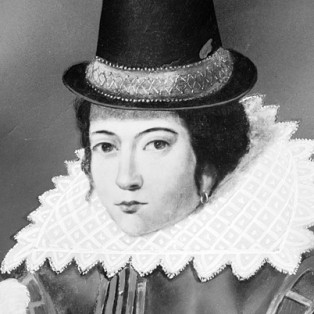
The Lone Ranger Rides
Clayton Moore played the masked cowboy riding high on his horse Silver in the TV favorite The Lone Ranger during the early fifties. With the help of the wise, quiet Indian Tonto, played by Jay Silverheels, the duo went about righting injustices in over one hundred episodes. Moore had the odd fate for an actor of wearing a mask onscreen so that even during the fame of the show, he was hardly recognized. Perhaps for this, there is no other actor who clung to his role do diligently, regularly donning the mask and costume to go out in public, some say even while in his car at a drive-through for fast-food. He was seen wearing his Lone Ranger costume shortly before his death of a heart attack in 1999 at age eighty-five. Silverheels took much less affinity to his role as Tonto and passed away quickly, though coughing laconically, at age sixty in 1980, of pneumonia. 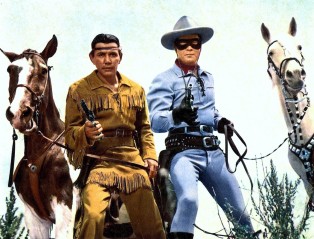
Following the Necktie Fashion
As railroad building brought desperadoes into Wyoming, citizens there found use for many ropes. Several bandits and killers were set swinging in and around Cheyenne and Laramie in 1868. Where the trees were not available, a telegraph pole served for scaffold. That was the case with the stringing up of Dutch Charley at Carbon and George Parrot (“Big Nose George”) at Rawlins. Idaho also attracted horse thieves, stagecoach robbers and killers who had to be eradicated. Vigilance committee at Payette and Boise did this with dispatch. The most notorious man strung up by the Boise group was David Updyke, leader of a desperado gang, who had been able to win an election for sheriff of Ada County. With Updyke and several of his men out of the way, the Idaho crime wave subsided. It’s amazing what happens as a result of a public hanging. Chapter three of The Plea will be on the website next week. Visit www.chrisenss.com.
Sam Sixkiller Outstanding Oklahoma Book Award
|

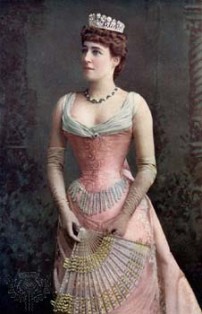





Close